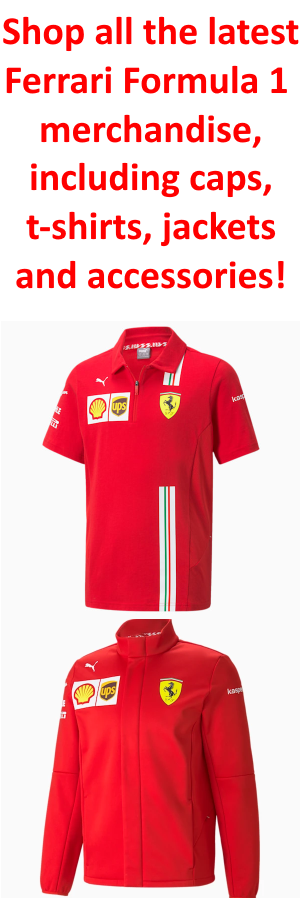The Japanese Grand Prix raised a query: might the 2025 championship be determined by qualifying outcomes? The very fact that there have been no overtakes among the many leaders in Suzuka, and that soiled air affected the duels, introduced this consideration again into focus in what’s the closing yr of a regulatory cycle that promised extra on-track pleasure.
This view was shared by Frederic Vasseur, who, after the Japanese leg, stated that this season’s titles might certainly be selected Saturdays in qualifying—not simply because it ensures a great beginning place but additionally as a result of the smaller the gaps between automobiles, the tougher it’s to overhaul a rival.
“Qualifying is all the time essential. The nearer you might be, the smaller the hole between the automobiles, and that is even more true once you’re within the group of automobiles. You’re not simply preventing the driving force forward of you. Sure, this championship will seemingly be determined by qualifying,” stated the Ferrari Crew Principal after the Suzuka race.
However will it actually be like that? Realistically, there’s no clear reply, however in lots of cases, qualifying outcomes have had a big affect on the race outcomes. Suzuka, with a single DRS zone, low tire degradation from the brand new asphalt, and a protracted sequence of high-speed corners, represented the acute instance of this, as typically is the case in Monaco.
In Monte Carlo, the slender monitor makes overtakes almost unimaginable, and once you add the truth that present automobiles are considerably bigger, it creates the right storm that makes technique the one actual instrument to affect what looks as if a pre-determined destiny after Saturday’s qualifying. In Japan, different components performed a job, however widespread themes had been additionally seen throughout different races.
Every monitor has its personal “efficiency delta” required to overhaul an opponent. At Suzuka, it’s estimated at seven to eight tenths, in line with Andrea Stella. That worth finds its reflection in actuality, as the numerous high-speed corners make it extraordinarily troublesome to intently observe one other automobile, on account of each lack of downforce and the chance of overheating the tires.
The present era of F1 automobiles was designed to make overtaking alternatives simpler, because of a discount within the turbulence created by the automobiles and a lesser susceptibility to downforce loss when following intently behind one other automobile.
After all, although, the automobiles evolve over time, and the truth that the FIA has allowed groups to work freely in key areas, similar to on the entrance wings and exterior components of the ground, has elevated the sensitivity of the automobiles to turbulence. Whenever you add that every automobile now generates extra downforce than a couple of seasons in the past, it is smart that staying within the slipstream has grow to be far more troublesome in comparison with three years in the past.
“We proceed so as to add aerodynamic load, which suggests the losses are even higher,” defined McLaren’s Crew Principal Andrea Stella. “Soiled air is an issue, as we noticed in China. In case you noticed [Lewis] Hamilton when he was main the dash, he might do virtually something he needed, though his tire had some graining.”
However there’s one other factor that realistically holds much more weight on this respect, and that’s tire degradation. Previously, the seven or eight tenths Andrea Stella referred to for overtaking an opponent at Suzuka was primarily on account of tire degradation, brought on by a really aggressive first sector of the monitor, the place the tires needed to endure excessive masses within the quick corners.
The truth that that part has been resurfaced has, nevertheless, significantly decreased the tire consumption, which means a race that final yr was performed out with two pit stops has changed into a race with a single cease this season. Moreover, the tougher tire compound might have continued for much longer with out displaying important indicators of damage. This allowed drivers to push freely with out triggering the one variable that might have modified the course of the Grand Prix.
Trying on the first three races, it was tire degradation that enabled overtakes. In Australia, the primary a part of the race was comparatively easy, with the one maneuvers coming when some drivers tried to push whereas others had been making an attempt to handle the intermediates to keep away from overheating them on a monitor that was drying in some areas.
China adopted the identical sample, with overtakes taking place both early within the stint, when some drivers opted for a slower introduction to avoid wasting the tires, or on the finish when degradation indicators had been seen. That is the important thing factor: tire consumption. There will probably be races, similar to the following one in Bahrain, the place the lengthy straights and excessive tire degradation will supply drivers extra probabilities to duel, particularly in direction of the top of the stint or for an undercut.
So, will the championship be determined by qualifying? Based mostly on what we’ve seen to date, official qualifying has typically positioned the automobiles in “order” primarily based on their total efficiency, aside from Suzuka, and it’s unlikely that we’ll see a whole reversal within the race. However when the gaps are shut, similar to between teammates or the group of pursuers, qualifying begins to play a decisive function.
This was additionally evident between the 2 McLaren drivers in China, the place the papaya-clad teammates marked one another all through the race with out having the ability to assault: not due to a scarcity of tempo, however as a result of as soon as within the soiled air, there was not sufficient of a rhythm distinction to try an overtake. There will probably be tracks sooner or later that can favor duels and be much less excessive than Suzuka, however certainly, qualifying will proceed to play a key function.



